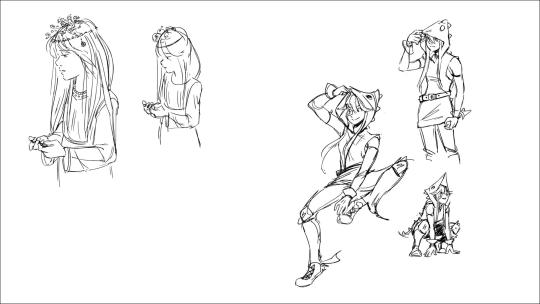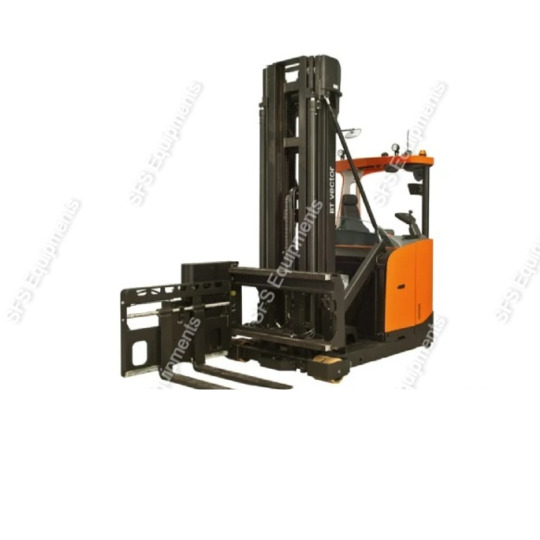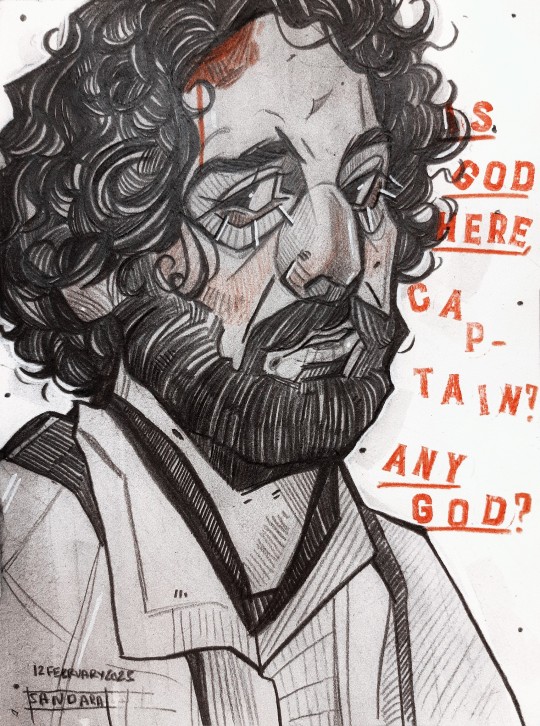#MHE
Text
The Black Ops Narrative
This narrative is short, simple, and to the point. Because it's only one post, I'm just gonna paste the whole thing in, so we can analyze it that way. It's certainly... interesting.
"Until we found the village, we had suspected that the detectors were just props. Just toys given to us by the CIA guys to reassure us. Nobody trusted the spooks. 3 days through the jungle, and these detectors had not detected a fucking thing. But before we even saw the first hut, the needles on all the detectors started moving in unison. If they were phony toys, it was a cool little special effect. The needles swayed back and forth and all the little metal boxes let out this spooky "ooaaooaaaooo" sound all in unison, like a school choir. Very weird. We turned them off.
As instructed, we treated every vietnamese as combatants, and killed them all. There wasn't any resistance though. A few had weapons, but most were unarmed. None fought back. They didn't even run. They were just sitting around, lazing in the sun, and we shot them where we found them. Grim work. And very weird. That probably spooked us out more than the detectors. It was like they were waiting to die.
After clearing the village, we didn't know what to do. So we turned one of the detectors on and wandered around to see what was up. The detector started going nuts around one of the bigger huts in the middle of the village. We had already cleared it, but we went in again. There was a big altar inside, with candles and Buddhas and gold signs with dink writing and shit. We figured maybe one of the buddha statues was setting the detectors off, but no.
The hut was very hot and muggy. Even by the incredibly humid standards of Vietnam, it was incredibly, incredibly humid in there. Even the Buddha statues were sweating. Their faces were literally coated with drops of moisture. Everybody noticed that there was something weird going with the air. There was something off about the pressure. So we just tossed everything.Picked all the shit up and tossed it out of the hut. Sure enough, when we picked up the big platform that held the altar, there was something under it.
It was a pit made of flesh. Maybe five feet across and going down about twenty feet before curving out of sight. When I say, "made of flesh," I mean, it looked like the inside of somebody's throat. Wet, reddish flesh-looking stuff. We had heard of them building tunnels, but this was... We really couldn't even understand what we were looking at.
It was breathing. The flesh kinda rippled and this hot air came out, and it felt and smelled just like somebody breathing right on your face. Enough to make you sick.
They told us "we would know it when we saw it."
Well, we saw it, and we knowed it.
We radioed in the coordinates and got the fuck out of there."
In the complete story, this is post 13, just after post 12 which is part of the Investigator Narrative. There's not much of a connection between the two from what I can tell, but there could be something there.
As for the post itself, if you've read through my analysis of the Investigator Narrative, you know exactly what these soldiers found in that village. A flesh interface, albeit a small one. This harkens back to post 2 of the Investigator Narrative, which told us about this world's version of the strategic hamlet program. What's interesting is that despite the presence of an interface, there is no talk of segmentation or any of the other phenomena usually associated with interfaces. It could be that this interface is too small to have a dangerous incident zone, or perhaps the interface itself hadn't yet been finished. That's as much speculation as I think is reasonable here. It could also very well be a plot hole. My bet is on it being either unfinished or too small, though.
Thematically, we're taken again to the idea of war and violence, but this time specifically a very unjust violence. The soldiers we follow kill unarmed Vietnamese civilians, which I assume is some kind of war crime. This will come up again later.
Final Thoughts:
Ultimately, I decided to skip the information segment of this project for this narrative. Only two posts in and I'm already breaking format. Probably not a good sign. But anyways, I just felt like nothing really new was added, plus it's much shorter overall so any new info there is doesn't really need to be consolidated. Overall, the Black Ops Narrative is a quick peek into the mystery. It adds a bit of context and fleshes out the world, but that's about it. It's also a bit spooky, but far from the freakiest this story gets. ok bye.
Back to beginning
2 notes
·
View notes
Text
Casually hopping back into tumblr after quite the hiatus and just casually thinking about replying versus reblogs, struggling because I fully want to support human beings in their personal goals and artistic endeavors (e.g., to help traction) while also recognizing that not everything falls into my brand of post
4 notes
·
View notes
Text
The way you broke my heart makes me feel like i never want to fall in love again.
8 notes
·
View notes
Text

digital sketchbook
2 notes
·
View notes
Text
oww whenever I put even the tiniest bit of pressure on my wrist (by picking stuff up) it hurts like HELL. I mean, on the bright side, it might mean I don’t have to practice viola? Still very concerning though, especially because it’s on my dislocated side, and that elbow has been getting redder and more sensitive, so this might have something to do with it. I was really hoping I wouldn’t have to get surgery but that might not be an option soon.
#chronic pain#disability#disabled#chronic illness#rare disorder#rare disease#spoonie#mhe#hme#hmo#mho#diaphysial aclasis
5 notes
·
View notes
Text

SFS Equipments have man-down and man-up trucks in our fleet, as well as the Used Very Narrow Aisles (VNA) Truck Series. The machines' aisles, which are guided by wire or rail, can be as small as 1460 millimeters. Good ergonomics, great driver safety, and outstanding performance are all features of this selection of used narrow aisle trucks for sale. With fingertip control for quick and accurate load handling, this line of VNA forklifts for warehouses can also operate in cold environments found in logistic fleets and warehouses.
#sfs equipments#toyota material handling equipment for rental#material handling equipment rental#used material handling equipment#toyota material handling equipment for sale#Used Very Narrow Aisle Truck#Used Very Narrow Aisle Forklift#used material handling equipment rental companies near me#MHE rental company in Chennai & Bangalore#MHE
0 notes
Text

1 note
·
View note
Text
I hate myself
0 notes
Photo

EP F1 model electric pallet truck. Electrical display shows the remaining battery and battery voltage show you if the battery health. #ep #pallettruck #mhe #electricpallettruck #warehouse https://www.instagram.com/p/CfpeJEdvp1U/?igshid=NGJjMDIxMWI=
0 notes
Text
Giới thiệu về MHE
MHE, tiền thân là công ty Komatsu Việt Nam, được thành lập năm 2004. Vào năm 2012, sau khi trở thành một thành viên của tập đoàn Marubeni – tập đoàn thương mại hàng đầu tại Nhật Bản được thành lập năm 1858, công ty chính thức được đổi tên thành công ty TNHH thiết bị nặng Marubeni, tên tiếng Anh là Marubeni Heavy Equipment.
Trụ sở chính đặt tại khu công nghiệp Quang Minh, MHE có 3 chi nhánh đặt tại Quảng Ninh, Đà Nẵng, Biên Hòa, đi cùng với đó là 2 Trung tâm hỗ trợ khách hàng tại Điện Biên, Lào Cai. Bãi máy luôn duy trì số lượng phong phú các dòng xe nâng hàng Komatsu và xe nâng người Haulotte, kho phụ tùng đa dạng về chủng loại với số lượng lớn, và đặc biệt là đội ngũ kỹ sư, thợ sửa chữa lành nghề giúp MHE không chỉ cung cấp thiết bị dưới dạng bán hoặc cho thuê mà còn cung cấp dịch vụ sau bán hàng chuyên nghiệp tới quý khách hàng.
Chúng tôi còn chú trọng đầu tư vào việc phát triển công nghệ cao, như hệ thống quản lý máy từ xa - Komtrax, và dịch vụ phân tích dầu - Kowa, nhằm giúp khách hàng giảm thiểu chi phí sản xuất, yên tâm sử dụng sản phẩm và dịch vụ của MHE. Nếu như Komtrax cập nhật cho khách hàng các thông tin về vị trí và tình trạng của máy thông qua máy vi tính thì Kowa là một hệ thống phân tích dầu hiện đại cảnh báo về tình trạng mòn của thiết bị và dự báo thời gian sửa chữa. Mức tiêu thụ nhiên liệu, cũng như tính hiệu quả của thiết bị luôn là mối quan tâm hàng đầu của chúng tôi.
1 note
·
View note
Photo

With operating costs on the rise, many South African Businesses are looking at different ways and means to save money responsibly and also limit their operational impact on the environment.
With massive increases in fuel prices, it has become even more challenging. Especially for those Businesses that still utilize Petrol and Diesel Fueled Forklifts. The good news is that #TeamOrizen has the perfect solution, introducing our ICE251 and ICE351 Lithium-Ion Smart Trucks. A robust and reliable Smart Truck built using a Diesel Chassis. Another industry first, the ICE Range has the ability to work in wet conditions and navigate challenging terrain.
Switch from Diesel to Electric and experience cost savings like never before, save on fuel, save on maintenance, and experience a solution that works for you.
Get in touch with us through social media or give us a call on at +27 10 010 5800.
#MHE#OrizenGroup#electricmhesolutions#Lithium-Ion Battery Forklift#Convert Diesel to Electric forklift#Lithium ion forklift battery#Forklift repair
0 notes
Text
The Investigator Narrative
The Investigator Narrative is the first and one of the longer stories in the collection. It spans 15 posts, and the first 12 posts of the narrative make up the first 12 posts of the entire thing. We'll go through each post, which I'll give a summary of, and then we'll discuss the information and themes.
Post 1:
The first post from the account goes as follows:
"In the MKULTRA experiments, the CIA dosed unwitting subjects with LSD to see how they would react. What has not yet come to light is that MKULTRA was an intra-agency project. The CIA created new departments within the CIA, and fed them steady doses of LSD, and other psychoactives to see how the departments would diverge, and mutate away from normal departments. Whole projects and hierarchies were created. With everybody involved, being more or less, unwittingly under the influence of LSD. This is how the "restraint bed portals" and "flesh interfaces" were first created - i.e. from a heavily psycho-mutated hierarchy. The entire thing had to be eliminated, but the technology it created has been revolutionary."
This is the beginning of the series, as well as the Investigator Narrative. So, what does this mean? Right now, we don't have the context for any of this nonsense, but this Narrative lays the groundwork for everything that will follow. "Flesh Interfaces," will be especially pertinent throughout the entire story, but "restraint bed portals" will become just as relevant later on.
Basically, we learn that the CIA was using LSD to perform strange experiments, which led to the creation of the flesh interfaces and bed portals.
LSD, and drug use in general, will be a prevalent motif throughout the story and, at this point, I believe will help us establish both theme and message.
Post 2:
The next post goes deeper into the idea of flesh interfaces, detailing how the US government used LSD in the strategic hamlet program during the Vietnam War. Apparently, these isolated villages were able to independently create these flesh interfaces, which were eventually destroyed by the north Vietnam army, although at a great cost of life.
Here, we learn a bit more. First off, whatever these interfaces are, pretty much anyone is able to create them as long as they have enough LSD. The specifics of how they are created are not yet explained, but whatever they are, they're dangerous to destroy.
Thematically, we're also introduced to the fact that these interfaces seem to crop up during times of war, or through warmongering efforts. This will be a prevailing motif. Already, we can link the idea of the interfaces to violence.
Post 3:
The third post in this narrative introduces us to several new concepts, all related to the flesh interfaces. The most important of which is probably the "Incident Zones."
The only real information we get is that they exist around the interfaces, which are also referred to here as "portals," implying that the interfaces actually lead somewhere.
There is also reference to "segmentation," which is some kind of phenomena that happens within the incident zones. References to segmented whales, cut cleanly in half, are also made.
And, of course, we have the first mention of the Chitinous Cruciforms! They appear in water! What does that mean? At this point, basically nothing! But you can make a pretty good guess. Chitinous means "with chiton," probably, and chiton is the stuff bugs are made of. (Just their exoskeleton, of course, which might actually be another motif of the story at large, but we'll get to that much later) a "Cruciform" is something in the shape of a crucifix, aka that thing that guy died on that one time.
There's also the brief mention of a "so-called Artigas Portal," which may become relevant later, but isn't important now.
While the incident zones and segmentation are interesting, it's actually the chitinous cruciforms that hold the most thematic weight here. These crustaceans (an inference on my part, but because they appear in water, and because of much later narratives and reference, I think it's a safe bet) take the form of a holy symbol. This will be important. Religion and spirituality are very important to MHE.
Post 4:
Post four expands a bit on everything we've learned so far, but, as you might expect, only adds more questions. Apparently, the Soviets were also doing experiments with LSD, dosing entire Ukrainian villages with the drug so that they'd create interfaces, which the Soviets would then try to remove. It didn't work, mostly, and here we learn a bit more about segmentation:
"Many of the soldiers and scientists were segmented, as often happens in an incident zone. So they ended up with people missing limbs, cut in half, etc. What's interesting is that the people could live for quite some time despite segmentation."
This apparently led to people believing that the missing body parts still existed in some other place, and a theory of interdimensionality became popular.
"Quite mistaken," so the narrator says.
Okay, I don't know what that means. Seriously, I'm as in the dark as you are. The interfaces don't lead to some other dimension, but that was my only theory. Whatever. I'll figure it out eventually.
Thematically, there's not much new here. Again, though, we have a reference to war, in this case, the Cold War. This will come up again.
Post 5:
Post five is basically just more mystery.
In Dubai, there are apparently "free-floating non-interface incidents," in fact the most of those in the world.
What does that actually mean? Well, apparently workers in Dubai were segmented on the frontal plane. They lived for five months in this state before dying.
Apparently, it was "absolutely fascinating to see in person."
This brings up a question of who the narrator of this narrative is. There's a few options, but none of them will come up until later. We'll come back to it in the future.
The post also details an incident where a group of schoolchildren were just slightly segmented, like bits of their fingers or whatever. They died within 2 months, despite the less serious wounds. Some of them also showed signs of "intellectual mutation." Hell if I know what that is. It will show up again, though.
Dubai doesn't have any known interfaces, but the main guess is that the architecture is based off interface geometry, giving it latent interface power. Ok, sure.
Again, there's not much new here thematically. Let's move on.
Post 6:
Post six is kinda strange. And, again, just adds more questions.
The narrator here brings up the apparent theory that Elizabeth Bathory was somehow able to build an interface before the invention of LSD. There's also apparently reference to them in the Bible, specifically in the description of New Jerusalem.
The narrator eventually disregards these, though, claiming it's all speculation.
"I will always regard the first instance of a flesh interface to have occurred in Triblenka, 1944. The geologic disturbances, partial tunnels, so-called interdimensionality, and wealth of clearly segmented bodies leave no doubt of its existence. The Soviets have documented this."
So, in this quote we learn about new phenomena the interfaces create, these tunnels and geological disturbances. And, the Soviets are mentioned again.
The narrator of the Investigator Narrative is clearly a character in this story. They have their own voice and opinions. Who they are, though, remains a mystery.
Again, there's a reference to religion. Specifically, the Bible and New Jerusalem. This could be foreshadowing to later events, but there might be something else here. Let's do something I haven't done in two years. Read the Bible.
New Jerusalem is described as a sort of giant cube that descends from heaven. How this has anything in common with something called a "flesh interface," I have no idea. Whatever. Moving on.
Post 7:
Post 7 is a response to people asking about post 6. It explains a bit more why Elizabeth couldn't have built an interface, because you need LSD to make one.
That's all.
Post 8:
Post 8 actually has some answers for us. We finally learn more about the Flesh Interfaces.
The narrator is asked to define a flesh interface, but can only list the phenomena associated with them. So, in turn, let's summarize as well.
The Incident Zone: an incident zone is created around the interface, and this is where segmentation happens
Segmentation: parts of objects disappear, but the object keeps acting as if the vanished part is still there.
Tunnels: they're tunnels. Called "ant farms" often in the story. When an interface is underwater, these tunnels have chitinous cruciforms.
Chitinous Cruciforms: yay
Oh, and of course we can't forget the Giant Metallic Cylinders that experience spontaneous segmentation at random intervals. Oh, yeah, okay sure. Might as well. These only appear around larger interfaces, which are known as Portals.
Apparently there are other phenomena that vary from interface to interface, but they rarely crop up, so we don't have to worry about them.
Not much here besides the usual motifs. Let's keep going.
Post 9:
Post 9 is very interesting. We learn about the distinction between regular interfaces and the larger "portals."
Portals are, as it turns out, large flesh interfaces. But, as the name implies, they are also big enough to transport people to "Sister Cities," alien places beyond the portals.
What the fuck.
Seriously, what does that mean? This is one of the most unexplained parts of the story, and there's no clear answer. Not yet, anyway.
Anyways, this is where the cylinders come in. They seem inorganic, like they were built. This is also never explained. The narrator talks about a certain specific portal, the largest above-water one apparently located in Novaya Zemlya, a small Russian island.
The portal itself was destroyed by the Soviets, and the narrator laments the lack of evidence for any of this.
Another mention of the Soviets. They seem to really be interested in these things. We'll soon find out that they weren't the only one. We know the US government has also done experiments, but the full, terrible extent of them hasn't yet been revealed.
Post 10:
Post 10 goes into greater detail of the Novaya Zemlya Portal (which I'll now call the NZP for breivity), and the sort of arms-race related to it.
The portal was built as a response to the CIA portal in Antarctica, the Artigas Portal. The Soviets constructed the NZP in record time, and it went through "all seven stages in less than thirteen minutes," due to the fact that they used 30,000 prisoners and an incredibly high gas concentration. (Of LSD, presumably.)
However, the portal didn't stop growing. They just barely managed to destroy it with a massive, powerful atomic bomb, but before they did, the managed to gain firsthand knowledge of the so-called "Sister Cities."
Someone had gone through the portal and came back alive.
Okay, so, not too much new info. Someone actually came back from the portal which, if you know anything about how traveling through the interfaces work, is no small feat. Let's hope the next post gives us more info.
Post 11:
Post 11 does not give us more info. I'll share this one in its entirety and then we can analyze it closer:
"I've always found Lisa's Dream to be a good starting place when trying to understand the psychological effects of "travel."
Lisa was a 9 year old girl sent through the Groom Lake interface in 1975. The Groom Lake interface connects to the so-called Sister City (technically, "persistent locus") known as "The Hanging Temples". She stayed there for 5 days of normal-time, but only 48 seconds of beyond-time, a marked discrepancy. Upon returning, she did not recall anything beyond becoming drowsy for a moment. She slept well that night, and in the morning she recounted a dream to the doctors, before dying later in the day.
A direct transcript of the audio from her interview: "It was spring and it had been raining all day, but the rain stopped just before it was going to be sunset. So all the clouds were purply and the sky was really orange. And the grass was all wet with rain and there were fire flies around, like all in the sky, way up in the sky, big ones. And me and my grandma went out to these hills way out past the edge of town, and under the hills there were people sleeping. Not in caves. They were buried under the hills. The people were asleep but they were hugging each other. Families, like moms and dads and little kids. Just packed together, a few thousand. The hills were just blown up like balloons because they were so full of people. Like a pregnant woman's stomach. My grandma told me to lie down but I didn't want to. She laid down and got sucked into the ground. I heard her voice coming out of the ground telling me to come inside.'"
Okay. So. None of that really meant anything. We learn that, in 1975, a young girl named Lisa was sent through the Groom Lake interface, returned, and died after giving the most bullshit nothing statement about a dream she had after the fact.
Let's break it down.
Her dream sounds more like a nightmare and is apparently related to the mental state returned travelers are in after their journey. From this, we can learn that whatever happens in the "Sister Cities" is probably not good. That's about it. We'll learn precious little more about the other side, but when we have all the information possible, we might be able to make a guess as to what's beyond the interface.
Post 12:
Post 12 is the last post of the Investigator Narrative before a five-post diversion to other narratives. We'll get to those eventually, but I'll keep things chronological here.
Here, we learn more about the arms race of research between the Soviet Union and the CIA. Both of which were equal in their ruthlessness. The difference lied in their approach.
The CIA used trained, military men, whereas the Soveits used random people from prisons and gulags. This is how the Soviets figured out that the younger you were, the more likely you are to survive a round trip through a portal. So, naturally, it was only a matter of time before they started using children.
In this post, we come to another motif. Child abuse. We'll learn that these experiments aren't the only example of the interfaces leading to unethical child exploitation. I also believe this motif is especially pertinent to unraveling the greater themes of the story.
Post 17:
Post 17 gives us more information about how Flesh Interfaces are made, and what they might look like.
Again, I'm going to post the whole thing so we can pick at it in greater detail:
"This kind of psychological mirroring was exploited in the design of the flesh interfaces.
When a human body is embedded in an interface, the independent (i.e. non-human) interface glands produce massive amounts of LSD which cause intellectual mutations (i.e. time-fracturing along several dozen axes).
euphoria
terror
These successive waves of giggling and screaming create a steady rhythm that washes over the traveler as they move through the interface.
Meanwhile, independent hormone regulators produce a emotional oscillation between two states:
Thus we have the typical sound of an interface: alternating waves of giggling and screaming that move through the interface population, running along the length of the interface as the hormones travel along the independent conduits.
Natural empathetic responses (mirroring) prepare the traveler's body for the process of 'embrace.'"
Nightmarish.
So, people are "embedded" in the interface, becoming part of it. There, the native glands of the interface itself pump the person full of LSD, and the person's own hormone glands make them swing between terrible screams and rancorous laughter. And, we get a mention of an "embrace," which will be expanded on in the Neo-Nazi Narrative. (Wonderful)
Post 22:
Post 22 means nothing to me and is not important, so we'll skip it.
Post 67:
A massive leap in the overarching narrative, I know, and we will come back to it later on in this project, but for the sake of clarity it's important we keep every narrative separate, at least for now. Im going to paste in the last paragraph of the post. It's the most relevant to this discussion. Here it is:
"The word "interface" refers to the input and the output, but it also refers to the box. We think of interfaces as existing in order to give us access to things, but they are also there to hide things from us. The idea is that some things are better off hidden. Everything will go along fine so long as a certain input produces the expected output. But when this stops happening, we have to open up the box and see what's inside. Sometimes we don't like what we find."
Ok. Honestly, not too much here, but there are a few small nuggets of info we can glean here. So far, we've read about people tampering with things they barely understand. Sure, they categorize phenomena, they run tests and build these things, but they don't realize that there is something deeply wrong here. Like the post said, the idea is that some things are better left hidden. The flesh interfaces are the input and output (which we'll get into later), but it's also the box. And if ever something unexpected happens, if ever we decide to delve to deep, we're probably not going to like what we find.
Information:
Here is all the information we've gathered so far about the world of Mother Horse Eyes, consolidated into one handy list. We'll expand on this after almost every narrative, and after we finish with the narratives, I'll make a separate post with the completed info, so go there if you get confused.
Flesh Interfaces:
Made through use of incredible amounts of LSD.
Made( at least partly) out of people.
Creates "incident zones" in a random, expanding area around itself.
"Incident zones" cause segmentation, "ant farms," chitinous cruciforms, and metallic cylinders if the interface is big enough.
Big interfaces are called "Portals," and they allow travel to "Sister Cities."
"Sister Cities" are whatever is on the other side of portals. Very little is known about them.
Alternative History:
During the Cold War, both the Soviets and the CIA experimented with flesh interfaces to varying degrees of success.
During the Vietnam War, the CIA secretly dosed certain villages with LSD, and attempted to create flesh interfaces.
Themes:
Violence, especially war
Child abuse and exploitation
Drug abuse/substance abuse
Religion and spirituality
Final Thoughts:
Okay, one down! The next few narratives are pretty short, so I don't expect them to take me much longer. In the meantime, I might also try to create a big web chart of all the info, although my photoshop skills aren't exactly great. Anyways, thanks for reading all this. Sure, I could have done, like, a youtube video on this or something but I don't have a camera or microphone. Maybe someday, though. There is also a fandom wiki for MHE, but it's very incomplete, and also doesn't really cover the themes. Also, it's q fandom wiki. Gross. Well, that about covers it. I'll see you soon when I talk about the Marines Narrative. ok bye.
Back to beginning
1 note
·
View note
Text










ℍ𝕖𝕣cheers
#mheg gin#mhe gin#melanin#women#beauty#hercheers#herch33rs#curvy model#ebony#models#black women#beautiful views
199 notes
·
View notes
Text


"is god here, captain? any god? it doesn't matter. this place is beautiful to me, even now. to see it, with eyes as a child's. there is wonder here, captain".
another favorite Goodsir scene. break the cutie!
#drew both pictures at the same time but they look like different people ☠️ ok#(and both of them don't look like goodsir mhe)#i love him when he is sad and broken#(im sad too)#the terror#the terror amc#harry goodsir#henry goodsir#paul ready
332 notes
·
View notes
Photo

Kasai Character sketches
3 notes
·
View notes
Text
Forgot to make a post when it started, but this week is M.H.E. Awareness Week!
0 notes